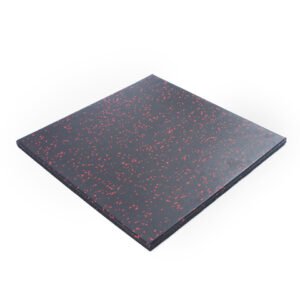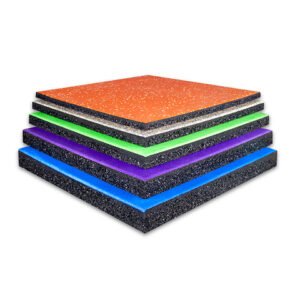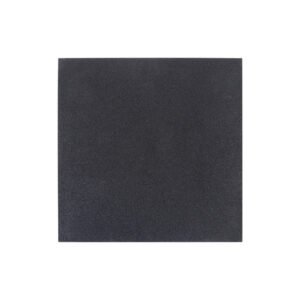Composite Rubber Tile vs Traditional Rubber Tile: What’s the Difference?
Confused about rubber tiles? You’re not alone. Many buyers don’t realize there’s more than one kind—until installation time.
Composite rubber tiles have an extra top layer that improves durability and appearance, while traditional tiles are made of one single rubber material throughout.

Knowing the difference between composite and traditional rubber tiles can help you choose the right one for your gym or project. I’ve worked with customers across Spain, Canada, and Australia, and this question comes up a lot. So, here’s the full breakdown.
What Are Composite Rubber Tiles Made Of?
Composite rubber tiles are more than just rubber—they’re an engineered product with layers.
Composite tiles are made by bonding a rubber roll skin on top of a solid rubber tile, creating a double-layer product with enhanced performance.

Composite Tile Structure
| Layer | Material | Function |
|---|---|---|
| Top Skin | Rubber Roll (EPDM) | Smoothness, color, durability |
| Base Layer | SBR Granules | Shock absorption, thickness |
We use a heat-press bonding process (not glue) to prevent delamination. One gym in New Zealand even customized their tile colors to match their branding.
👉 Want to customize your flooring? Contact us for OEM options
How Are Traditional Rubber Tiles Different?
Traditional tiles are simple, solid, and made from one material all the way through.
Traditional rubber tiles are single-layer tiles made entirely of SBR rubber granules, without any top skin.

They come in different formats:
- Tiny granule tiles: denser SBR for smoother surface
- Color SBR tiles: mixed with dyed rubber
- Puzzle interlocking tiles: DIY-friendly
These are popular with budget-sensitive clients like Sean in Spain or Mark in Australia.
Composite vs Traditional Tile: Quick Comparison
| Feature | Composite Tile | Traditional Tile |
|---|---|---|
| Structure | Two layers | Single layer |
| Surface Texture | Smooth, dense | Rough, granule finish |
| Durability | ✅ Higher | ⚠️ Good |
| Appearance | ✅ Premium look | ⚠️ Basic |
| Installation Time | ⚠️ Medium (align top) | ✅ Fast |
| Cost | ❌ Higher | ✅ Lower |
| Cleaning | ✅ Easier (sealed top) | ⚠️ More debris-prone |
📚 Learn more about gym tile installation here
Which One Should You Choose for Your Gym?
It depends on your space, branding, and budget.
Choose composite tiles if you want a premium, durable floor. Choose traditional tiles if you need budget coverage for high-impact zones.
Ask Yourself:
- Is this a high-traffic or brand-front space? → Choose composite
- Do I have heavy weight drops daily? → Both types work; thickness is key
- Am I cleaning daily? → Composite is smoother
- Is budget critical? → Traditional tile wins
💡 Explore our full rubber tile collection
Related Resources
- How Thick Should a Gym Mat Be?
- Rubber Tile Installation Guide
- What’s Better: Rubber or Vinyl Flooring?
Conclusion
Composite tiles give you a sleek look and long-term durability. Traditional rubber tiles provide solid impact protection at a lower price. The best choice depends on your gym’s needs — and we’re here to help.
📧 Need help choosing the right tile? Email us at info@lanhefloor.com
🌐 Browse more products at www.lanhefloor.com
